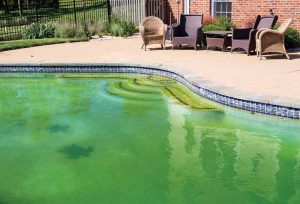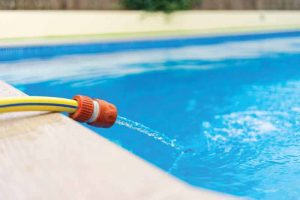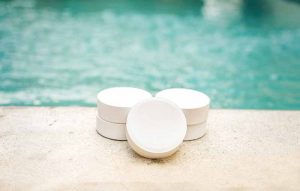
Controlling nutrients in pool water
Algae is a plant, and like most plants, it needs nutrients to bloom. The two main nutrients it needs are nitrates and phosphates.
Nitrogen is introduced from lightning and rainstorms, as well as from swimmer waste and well water. At proper levels of FC, nitrogen in the form of nitrites will be oxidized out of the water. If the FC level is too low, nitrites will convert to nitrates, which cannot be oxidized and will accumulate as food for algae. Algae can become a problem at nitrate levels of 10 ppm. Nitrates can only be removed by draining some of the water out to lower the ppm level.
Another prime nutrient for algae growth is phosphate, in the form of orthophosphate. Phosphates are introduced to pool water from many sources. The two main contributors of phosphate are metal sequestering products used to prevent scale and staining, and source fill water. Many metal and scale prevention products contain phosphonic and phosphoric acid. While these are not direct nutrients, their reaction to metals and hydrolysis will produce orthophosphate, which is a direct nutrient. The biggest culprit of this nutrient is source water.

A majority of water treatment facilities in North America are mandated by the Environmental Protection Agency (EPA) to practise corrosion control of underground pipes, to prevent the leaching of lead or pathogenic micro-organisms into the supply chain. As a result, straight orthophosphate is added to drinking water systems as an anti-corrosion method for lead and copper, as recommended by the EPA.8
One way to determine the presence of orthophosphate in fill water is to test the source. Most test kits and strips in the pool industry are designed to check for this direct nutrient. To take this a step further, orthophosphate is classified as a “growth limiting nutrient” for algae, according to lake and pond science. This means the presence of orthophosphate in water is crucial to the healthy growth of algae. When orthophosphate is removed from the water, even if there are still nitrates present, the growth of the algae is seriously limited.9 However, phosphate can be placed back into the pool as a result of refilling. Thus, it is recommended to test the source water and pool water, then treat the pool water with a phosphate remover. Zero phosphate would be ideal. However, in today’s world, it would be very difficult. It is best to maintain a phosphate level below 200 parts per billion (ppb).

Managing nitrates and phosphates and keeping their levels down will go a long way, not only in preventing algae, but also in saving chlorine. One of the biggest consumers of free chlorine is algae that continues to feed on nutrients.10






